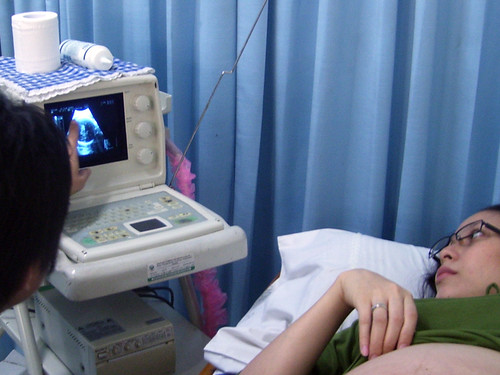Pregnancy After Tubal Ligation
Published by Nanni on Wednesday, October 24, 2012
Photo credit by Chandra Marsono
There are many birth control options available for women today. If you are certain that you do not want to have any more children, an option that you may consider is tubal ligation. Tubal ligation is typically a permanent birth control solution. However, a small number of women may become pregnant after this procedure.
A tubal ligation is a surgical procedure in which the doctor blocks or alters the Fallopian tubes to prevent an egg from traveling through them to the uterus. The tubes may be burned, cut, clipped, or tied off.
The most common way to become pregnant after a tubal ligation is by reversing the procedure. A doctor may attempt a tubal ligation reversal if you change your mind about having more children after you have undergone a tubal ligation. Tubal reversal offers mixed results. If you choose to attempt a reversal, you should know that if the procedure does not work the first time, that's generally it. Repeat reversal attempts carry an even lower success rate. Health insurance also usually does not cover tubal ligation reversals, so you will need to pay for this procedure out of pocket. For these reasons, you should choose a doctor who has a good deal of experience and success with tubal reversal procedures.
As with any surgical procedure, there is also the possibility that the tubal ligation will not be successful. Typical tubal ligation failure rate is about one percent. This failure rate is approximately the same regardless of the method used in the procedure, but the clip method is somewhat more likely to fail. As such, a tubal reversal is more likely to succeed if the original procedure was done with clips. Younger women may have a slightly greater chance of becoming pregnant after a tubal ligation.
If a tubal ligation does fail, the odds of an ectopic pregnancy are greater. An ectopic pregnancy is one in which the embryo implant outside the uterus and begins to grow. This typically occurs in one of the Fallopian tubes, giving the condition the alternate name of "tubal pregnancy." If an embryo implants in the Fallopian tube, the tube may eventually burst, which creates a life-threatening situation for the mother. Termination of the pregnancy is the only treatment for an ectopic pregnancy.
If pregnancy does occur after a tubal ligation, whether from having the procedure reversed or from failure of the procedure, there is typically no cause for alarm. Unless the pregnancy is found to be ectopic, it will usually progress normally. If you have had a tubal ligation and become pregnant anyway, you should see your doctor as soon as possible. He can order an ultrasound to determine the location of the embryo and confirm whether your pregnancy is ectopic. The earlier you know that a pregnancy is ectopic, the better, as there will be less chance of the Fallopian tube rupturing. If your doctor locates the embryo inside your uterus, he will prescribe a typical course of prenatal care if you elect to continue the pregnancy.
 | Posted in »
| Posted in »

0 comments: Responses to “ Pregnancy After Tubal Ligation ”